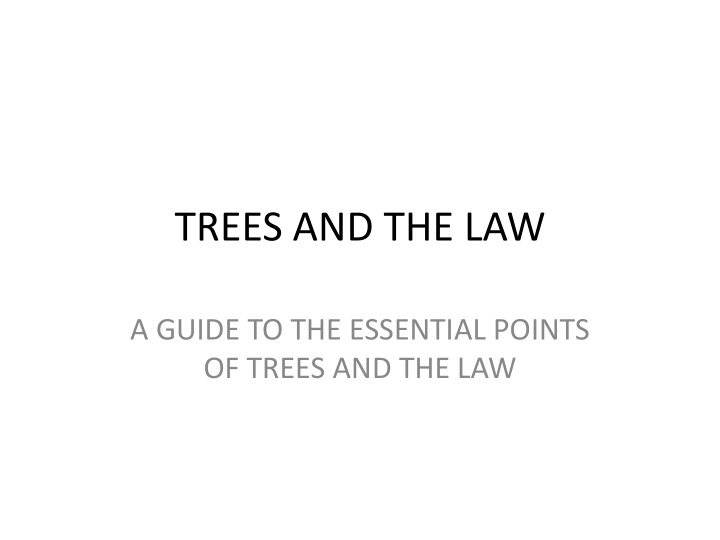



TREES AND THE LAW A GUIDE TO THE ESSENTIAL POINTS OF TREES AND THE LAW
TREE PRESERVATION ORDERS A local planning authority can serve a TPO on tree(s) when it is expedient • to do so. Such trees need to: • Have a reasonable degree of future longevity • Be under threat to a greater or lesser extent • Be of good public amenity value • TPOs can be served on individual trees, groups of trees, woodlands or • areas of trees. It is a criminal offence to lop, top, fell or otherwise destroy a tree • protected by a TPO without first applying for and receiving consent from the local planning authority. A local authority can permit, partially permit, or refuse an application. •
• A refused application can be appealed to the Planning Inspectorate. • The local planning authority can be held liable for any costs directly arising from a refusal of consent for tree works.
Exemptions from need to apply: If the tree is dead, or has deadwood (only dead wood may be removed) • If the tree is diseased. • If the tree is imminently dangerous. • To mitigate a legal nuisance. • Then only 5 days written notice is required.
TREES IN CONSERVATION AREAS Applies to all trees with a stem diameter greater than 75mm measured • 1.4m. Above ground level. Essentially imposes all the same restrictions/requirements as a TPO tree… • Except…….. The applicant is no longer applying for permission, but giving Notice • (S211) of intention to carry out works. The local authority has 6 weeks to decide whether to raise no objection, • or to allow 6 weeks to lapse, in which case the work may go ahead, or to serve a TPO. A TPO has to be served to prevent the notified work because a notification • cannot simply be refused (it’s a notification not an application). Therefore the tree must show same qualifying TPO criteria as before. • Exemptions are same as TPOs. •
Other tree related legislation: Forestry Act- Covers Felling Licences required for trees outside domestic curtilages. To • fell more than 5cubic metres of utilisable timber in an annual quarter requires a Felling Licence from the Forestry Commission. High Hedges Legislation Covers 2 or more evergreen trees growing as a hedge. • There is no imposed maximum height contrary to received perception. • The local authority can only act after two neighbours in dispute have • demonstrated that they have reached the end of the road in their negotiations. After a series of measurements the local authority calculates an action • height for the hedge to which it must be maintained.
Hedgerow Act 1997 • To remove a rural hedgerow requires a hedgerow removal notice to be submitted to the local authority. • The LPA has 6 weeks to determine whether it is an ‘important’ hedgerow as defined by the legislation. If so a Hedgerow Retention Notice is served to prevent its removal unless exceptional circumstances suggest otherwise. • Exemptions apply.
Recommend
More recommend